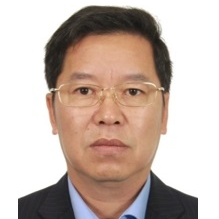Advances in Self-Healing Materials
A special issue of Materials (ISSN 1996-1944). This special issue belongs to the section "Polymeric Materials".
Deadline for manuscript submissions: closed (10 April 2023) | Viewed by 7051
Special Issue Editors
2. School of Polymer Science and Engineering, Qingdao University of Science and Technology, Qingdao 266042, China
Interests: multiscale structure of polymeric materials; orientation induced polymer crystallization; surface induced polymer crystallization; confined polymer crystallization; polymer blends
Special Issues, Collections and Topics in MDPI journals
Interests: super tough hydrogels; nanomaterials and nanocomposites; polymer blends; plastics recycling and value-added reuse
Special Issues, Collections and Topics in MDPI journals
Special Issue Information
Dear Colleagues,
Self-healing materials with the ability to autonomously repair damages exhibit numerous applications in various areas, e.g., surface protection coatings, healthcare materials, and so forth, since they can extend their lifetime and reduce maintenance costs.
The present Special Issue aims to collect featured research and review articles on all aspects of self-healing materials, including preparation, characterization, processing, property, and application. Its main scope covers, but is not limited to, the following aspects:
- The design and synthesis of self-healing materials;
- The structure characterization of self-healing materials;
- Mechanisms of the self-healing capacity;
- The structure–property relationship;
- Modeling processing engineering of self-healing materials;
- Applications of self-healing materials;
- Service evaluation of self-healing materials;
- Recycling of self-healing materials.
Topics include but are not limited to:
- Materials preparation;
- Multiscale structures;
- Structure regulation;
- Processing techniques and applications;
- Structure and properties
- Rubbers, plastics, and fibers;
- Coatings and thin films.
We kindly invite you to submit your work to this Special Issue. Full papers, communications, and reviews are all welcome.
Prof. Dr. Shouke Yan
Prof. Dr. Xuming Xie
Guest Editors
Manuscript Submission Information
Manuscripts should be submitted online at www.mdpi.com by registering and logging in to this website. Once you are registered, click here to go to the submission form. Manuscripts can be submitted until the deadline. All submissions that pass pre-check are peer-reviewed. Accepted papers will be published continuously in the journal (as soon as accepted) and will be listed together on the special issue website. Research articles, review articles as well as short communications are invited. For planned papers, a title and short abstract (about 100 words) can be sent to the Editorial Office for announcement on this website.
Submitted manuscripts should not have been published previously, nor be under consideration for publication elsewhere (except conference proceedings papers). All manuscripts are thoroughly refereed through a single-blind peer-review process. A guide for authors and other relevant information for submission of manuscripts is available on the Instructions for Authors page. Materials is an international peer-reviewed open access semimonthly journal published by MDPI.
Please visit the Instructions for Authors page before submitting a manuscript. The Article Processing Charge (APC) for publication in this open access journal is 2600 CHF (Swiss Francs). Submitted papers should be well formatted and use good English. Authors may use MDPI's English editing service prior to publication or during author revisions.
Keywords
- homopolymers
- copolymers
- biopolymers
- conjugated polymers
- polymer blends
- polymer composites
- processing and engineering
- structure
- functionalities
- property
- characterization







